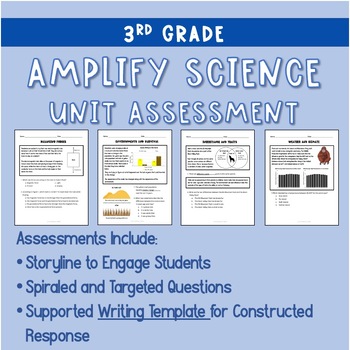3rd Grade Science Unit Assessments for Amplify Science Bundle
- Zip
What educators are saying
Products in this Bundle (4)
Description
Amplify science unit assessments are great, but how can we better support learning and assess what students really know? This bundle includes all unit assessments that align to the units within Amplify Science for 3rd Grade Science, but are designed to provide students with a learning experience as they engage with the assessment.
The unit assessments are aligned to concepts within the unit of study. This assessment is designed to supplement the assessment provided by Amplify Science, however can be implemented without use of the curriculum to assess the conceptual understanding.
The assessments are designed to include a storyline to help students make sense of the phenomena presented. The assessment includes texts and models for students to draw conclusions and answer targeted questions.
The assessment is designed with the 3 Dimensions of NGSS in mind, and highlights the ability for students to do science throughout the assessment. An answer key is provided, along with a clear rubric for a written CER response. Within the answer key, you will see how each question aligned with a science and engineering practice.
Each assessment includes a series of varied questions and culminates with 1 CER response. For the CER response, there is a scaffolded writing template included. This template can be given to students requiring additional support in CER writing.
Need help planning, check out our scope and sequence here.





